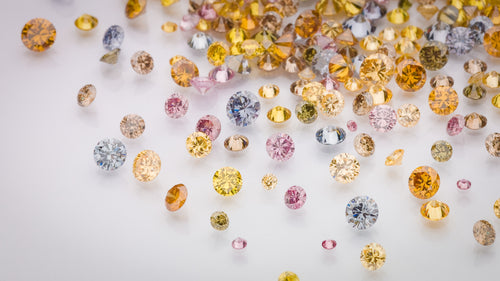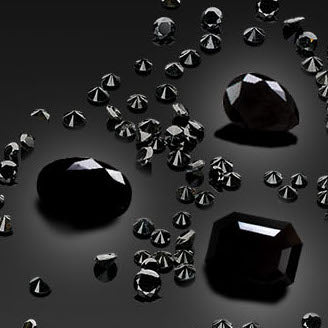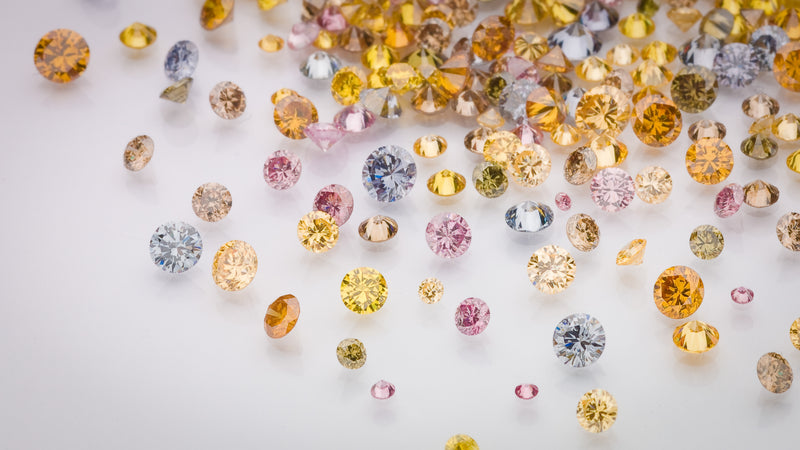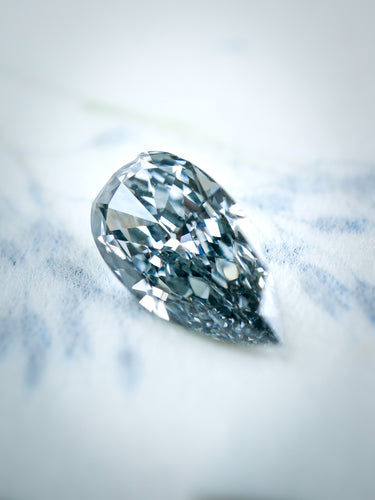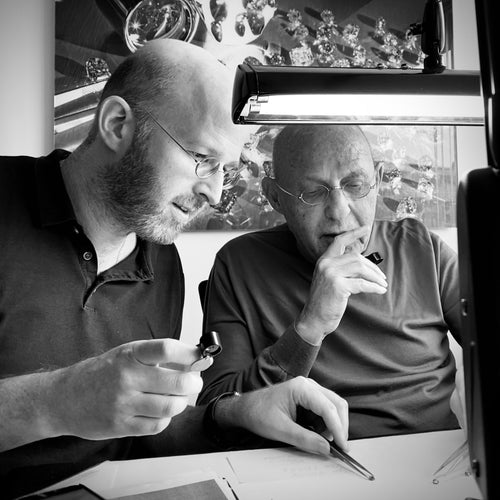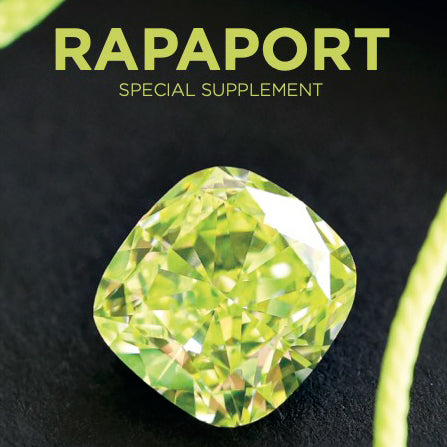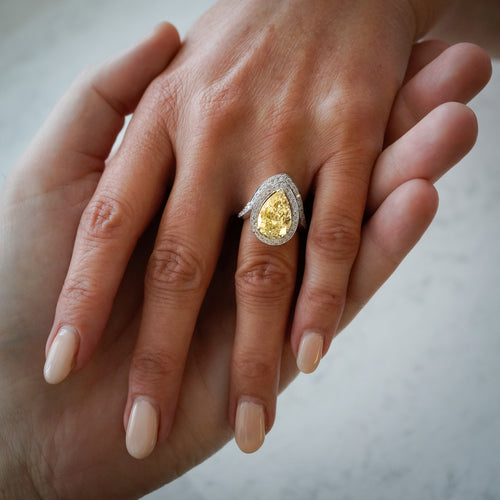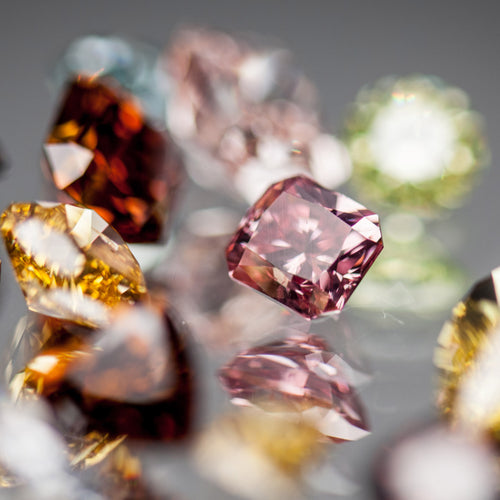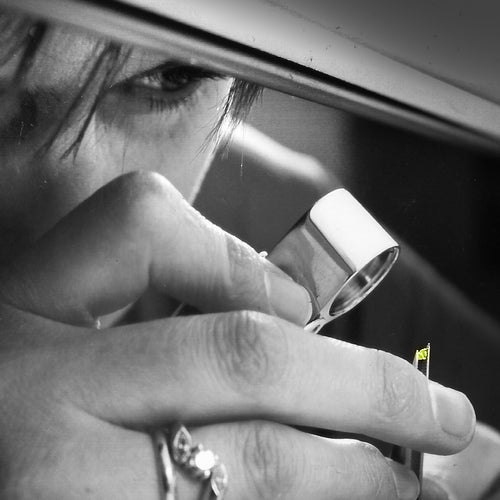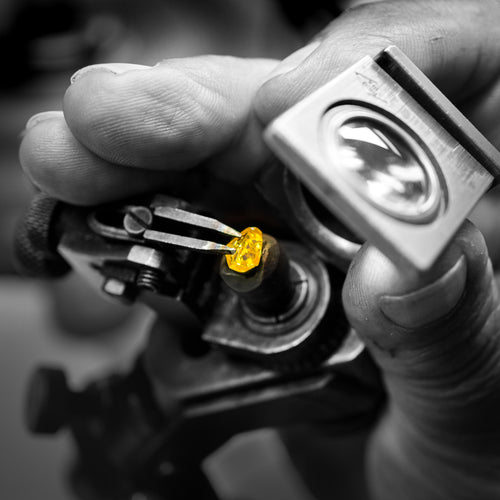There are two types of treatments: treated natural diamonds, and synthetic diamonds. The aim of treating natural diamonds is to artificially improve their quality by changing one or several of their characteristics, thereby increasing their value. Such treatments generally target color and purity.
For color, treatments can help to resolve problems related to quantity and uniformity: if a jeweler needs a hundred or so identically colored diamonds to set in a pav?, treating an entire lot of diamonds will enable him to obtain a more uniform color.
The main types of treatments are presented hereunder. This list is as complete as possible however this area is still the subject of much research and development.
a. Modification of purity
Crack filling: process of filling natural cracks or cleavages with substances that have a refractive index similar to that of diamonds. In this way, the light is less refracted than it would be if the cleavage were filled with air - and therefore much less visible. Laboratories do not issue certificates for diamonds that have undergone this type of treatment.

Laser drilling: this process aims to lighten or completely eliminate dark inclusions. A tiny canal is laser-drilled and high pressure boiling acid is then injected in the hole. Laser drills are mentioned on certificates.
b. Modification of color
- Heat treatment or annealing: this technique produces black diamonds. Low quality diamonds are exposed to very high temperatures (around 1000°C) for several hours, until graphite residues appear in the heart of the crystal, making it dark and opaque or even uniformly black. Laboratories do not deliver certificates for these treated diamonds.
- Irradiation: exposure of a diamond to a source of radiation will change the position of atoms within the crystal lattice, which will cause its color to change. Green, blue and black diamonds can be created using this technique. Laboratory certificates mention "treated".
- Irradiation + heat treatment: after a first transformation via irradiation, the color can be changed again by exposing the diamond to temperatures of around 800°C. This will again re-position atoms within the crystal lattice, and atomic defects can be repaired or removed. The diamond will absorb light differently and will thus take on another color. As a general rule, brown, yellow orange, blue, pink and purple diamonds can be obtained with this treatment. Laboratory certificates mention "treated".
- HPHT (high pressure, high temperature): this process subjects the diamond to a combination of very high pressure (HP) and very high temperature (HT), similar to the conditions in which diamonds are formed in nature. This will cause imperfections in the crystal lattice to be "repaired", provoking a change in its color. Depending on the type of stone that is treated, the HPHT process can make a stone more colorless, or can produce blue, yellow orange, yellow green, pink or brown diamonds. Certificates mention "HPHT".
- Coating: with this process, a thin layer of colored substance is deposited on the diamond in order to change its original color. Coating is falling into disuse and laboratories do not issue certificates for these types of treated diamonds.
|
Color
|
Heat treatment
|
Irradiation
|
Irradiation
+ heat treatment |
HPHT treatment
|
|
Blue
|
|
x
|
x
|
x
|
|
Green
|
|
x
|
|
|
|
Yellow orange
|
|
|
x
|
x
|
|
Yellow green
|
|
|
|
x
|
|
Pink
|
|
|
x
|
x
|
|
Brown
|
|
|
x
|
|
|
Black
|
x
|
x
|
|
|
